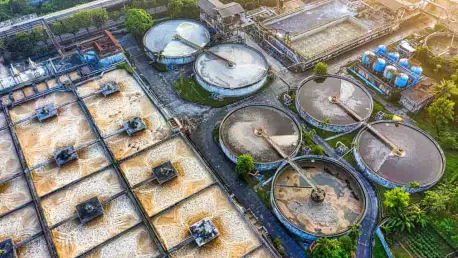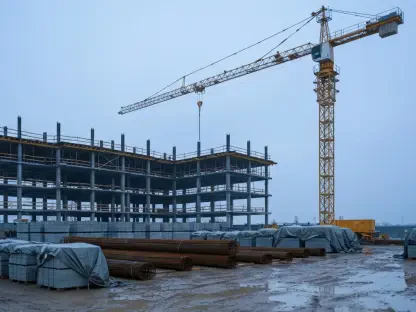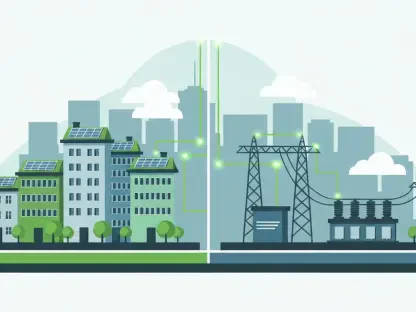In the world of construction and infrastructure development, few projects come as crucial and complex as the renovation of a major water treatment plant. As the expert Luca Calaraili delves into the intricacies of the Jack H. Wilson Water Treatment Plant project, the conversation reveals a blend of innovation, strategic planning, and community impact. Through this enlightening discussion, Luca shares his expertise, thoughts on modern techniques, and the broader implications of such an ambitious endeavor.
Can you provide some background on the Jack H. Wilson Water Treatment Plant? How long has it been in operation, and what is its current role in the community?
The Jack H. Wilson Water Treatment Plant has been a cornerstone of the Little Rock community for nearly 70 years. It’s the largest of its kind in Arkansas, serving as a vital hub for water supply. Over the decades, it has played a crucial role in delivering clean, drinkable water to countless residents. As local populations grow and demand increases, its importance continues to expand, making this renovation a step towards sustaining that growth.
Why was the renovation of the Wilson Water Treatment Plant deemed necessary now?
There are several factors at play. First and foremost, the facility is aging. Regular maintenance can only do so much for a plant approaching seven decades of service. The growing demand for water, coupled with the need to integrate modern technology, underscored the urgency. Simply put, it’s about ensuring the community’s future needs are met efficiently and reliably.
What are the key goals for the $230 million renovation project of the Wilson plant?
The principal objectives revolve around increasing efficiency and capacity. We aim to tackle deferred maintenance issues and boost the treatment capability from 133 million gallons per day to 150 million. Equipping the plant with contemporary water treatment techniques will not only modernize its operations but also help secure water supply for decades to come.
How will the renovation address deferred maintenance and improve the plant’s efficiency?
By focusing on areas that have long needed attention, we can fortify the plant’s existing framework while introducing new systems. This dual approach ensures we’re not just patching a 70-year-old structure but reinvigorating it with cutting-edge solutions for greater efficiency, reducing future wear and tear, and enhancing overall operation.
What modern water treatment techniques will be introduced in the renovated plant?
We’ll be leveraging the latest advancements in water processing technology. These methods aim to accelerate the treatment cycle, improving both speed and effectiveness. Such updates mean that the plant can more readily respond to fluctuating demand, which is critical in a region experiencing robust growth.
How did Max Foote Construction, Hazen and Sawyer, and Hawkins-Weir Engineers become involved in this project?
These companies bring specialized expertise to the table. Max Foote Construction is renowned for handling large-scale projects and managing risks effectively. Hazen and Sawyer, along with Hawkins-Weir Engineers, offer a wealth of knowledge in design and engineering. Together, their collaboration ensures a project of this magnitude is executed with precision.
Can you explain the construction management at risk approach and why it was chosen for this project?
This approach allows for early contractor involvement, making it easier to control costs and schedule adherence. It emphasizes flexibility and collaboration between the design and construction teams, which is crucial given the ongoing operation of the facility. It’s about mitigating risks and ensuring project success.
With the plant still operational during the renovation, how will construction phases be managed?
The challenge is maintaining uninterrupted service while executing extensive upgrades. We’re adopting a phased approach where one basin is shut down for renovation while the others continue to function. This method minimizes disruption and ensures continuous water availability to the community.
Can you describe the process of shutting down one water basin at a time while keeping the facility operational? What measures are in place to ensure uninterrupted water supply?
Strategically planned phases allow us to take one basin offline, renovate it, then move to the next. This staggered schedule involves meticulous coordination and temporary capacity adjustments. Backup systems and detailed contingency plans are integral components, safeguarding against any supply interruptions.
How will the renovation impact the treatment capability of the plant in terms of gallons per day?
Post-renovation, we anticipate an increased capacity from 133 million gallons to 150 million per day. By speeding up water movement through the system and expanding processing ability, we can meet higher demand levels without a hitch.
Could you elaborate on the new technology that allows faster water processing and increased capacity?
The technology focuses on optimizing flow dynamics and enhancing purification quality. Advanced filtration and treatment methods will reduce processing time and increase the volume handled. This tech ensures that as demand rises, we can efficiently manage supply without compromising quality.
What challenges do you anticipate in meeting the growing demand for water in the region?
Balancing immediate upgrades with strategic long-term planning will be key. The biggest hurdle will be ensuring infrastructure keeps pace with city growth. Population spikes, climate changes, and resource management are ongoing considerations that influence our approaches.
How did Central Arkansas Water’s board of commissioners decide to approve the bond issue and guarantee maximum price contract?
The board recognized the necessity of this extensive project to secure the region’s water future. Their decision was spurred by comprehensive assessments highlighting the plant’s critical role and the urgent need for modernization. The bond issue and contract are mechanisms to finance and cap costs effectively.
What is the expected timeline for completing the renovation, and are there milestones for each phase?
We’re looking at a timeline of about five years, with specific milestones set for key project phases. These include sequential basin completions and technology integrations. Regular progress assessments will keep us on track and allow for adjustments if unforeseen challenges arise.
How is the community being informed and involved in the renovation process? Are there any public forums or updates planned?
Transparent communication is pivotal. We’re hosting forums and distributing updates across multiple channels, ensuring residents remain informed and engaged. Interactive sessions and open dialogue foster community trust and collaboration.
In the context of America’s aging water infrastructure, how does the Wilson Water Treatment Plant renovation project fit into broader national trends?
The renovation represents a microcosm of the national movement towards upgrading water infrastructure. It’s part of a broader effort to address aging facilities across America amid increased demand and environmental unpredictability. By prioritizing such projects, we’re laying a foundation for sustainable resource management.
Do you have any advice for our readers?
Embrace innovative approaches and recognize the importance of sustainable infrastructure. Investing in modern technology and strategic planning today is vital for addressing tomorrow’s challenges effectively. Be proactive, involved, and informed about the developments in your community’s resources.









